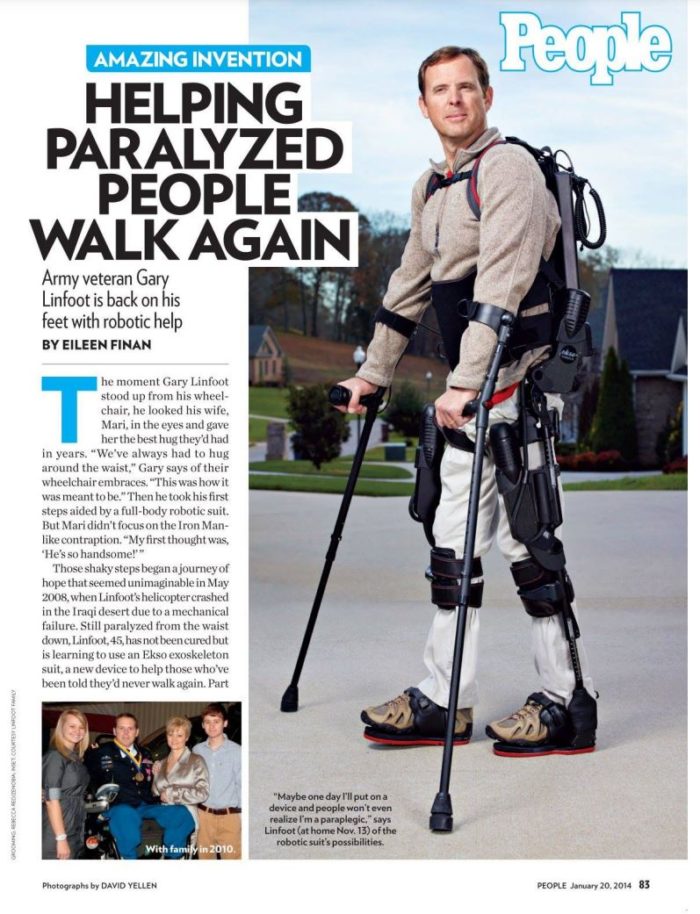
The first time I met Chief Warrant Officer 5 (CWO5) Gary Linfoot was in Mosul, Iraq, in 2006. Gary was a AH6 Little Bird pilot with the 160th Special Operations Aviation Squadron (SOAR). I was a Forward Observer with the 1st Ranger Battalion, 75th Ranger Regiment. We were two voices at the other end of a radio. He was in the air hovering over our objective on any given night, and I was on the ground climbing rooftops. Occasionally, we saw each other in person during mission briefs some nights. Back then it was mostly business and mission focus, not much small talk.

The second time I met Gary was almost ten years later. This time things were different. I was an employee with Oakley Standard Issue, and Gary had long since retired after almost 20 years of service. Gary was also confined to a wheelchair and paralyzed from the waist down.
On May 31, 2008, while conducting operations in Iraq, Gary’s helicopter suffered a catastrophic mechanical failure. The helicopter crash-landed, injuring Gary severely. Medics evacuated him quickly to Germany for a spine stabilization surgery. Treatment took him from Walter Reed National Military Medical Center, to the Tampa VA Hospital and finally the Shepherd Center in GA. A broken back had paralyzed Gary from the waist down.
When Gary and I met the second time, we shared several stories from that deployment to Iraq. His jovial nature and demeanor were that of a strong and hopeful man. If this man had demons, like many veterans do, he did not show it. Many injuries confront veterans with new physical challenges. Not to mention the mental ones associated with a departure from service or trauma of the event.
Help from Infinite Hero
This is where the Infinite Hero Foundation (IHF) steps in.
Established in 2012, the IHF is established with a vision to fund the most cutting-edge and promising approaches for our military heroes and families. To combat the most difficult physical and mental front-line issues facing our military members and their families. Inspired by the many friendships with our military personnel, the foundation was set in motion by Senior Director of Oakley Standard Issue Erick Poston, and then CEO of Oakley Colin Baden. The Foundation set out to convene and inspire collaboration of the top minds in technology, community, medical research, and mental health care. The IHF seeks out, and reads, applications from the leaders in experimental and impactful treatments for our veterans. Grants are then awarded to various companies.
What better candidate for the attention of the IHF then a paralyzed Special Operations aviator?
Ekso Bionics
In 2013, one of the grant recipients was Airpower Foundation who partnered with Ekso Bionics to construct a bionic exoskeleton. The system enables individuals with paralysis to stand and walk again. With a $100,000 grant, Gary was one of the first military veterans to receive an Ekso suit for personal use. Ekso hosts invaluable psychological and physical benefits, and Linfoot’s use of the technology will help provide critical data and awareness necessary to expand the availability of the technology beyond its current reach, primarily in hospitals and rehabilitation centers.

Gary’s service to his country is profound. From February 2003 to May 2008, Gary completed 20 combat deployments in support of Operation Iraqi Freedom. “It is among the greatest honors of my life to receive the first Ekso device,” said Gary Linfoot. “To have the chance to walk again, to see my wife Mari eye-to-eye, and hug my children heart-to-heart is a feeling I cannot begin to explain. I’m thrilled to be an ambassador to help expand this use of this technology in the hopes to one day grant the same life-changing experience to other wounded veterans.”
On October 29, 2016, Gary walked his daughter down the aisle for her wedding day. Watch the full story below:

